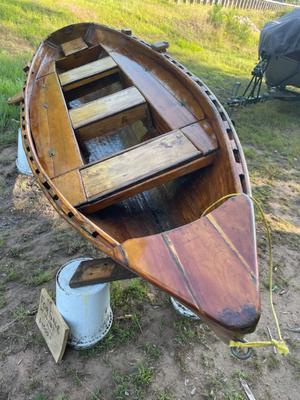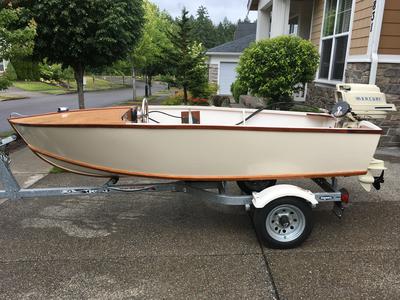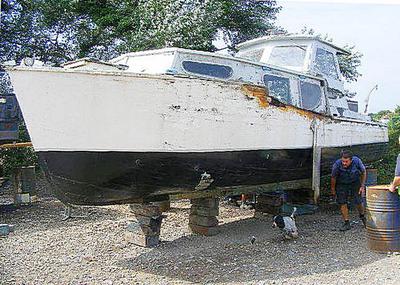Crack in stern
We have been working on restoring a 16 ft wood lapstrake cat boat and have run into an issue with a crack in the stern.
The previous owner had filled the crack and added some boards on the inside to strengthen the stern.
He had also applied fibreglass cloth over the outside of the entire stern.
We had a moisture problem and ended up with the cloth delaminating.
Because of this and much of the paint needing to be stripped, we decided to redo the entire boat.
The rest of the boat is solid, but on the stern where the previous repairs had been made, one side of the crack separated.
We ground out the initial filler and after letting the boat sit in our garage for 2 years we filled the crack with west system epoxy mixed with the silicone filler.
Everything looked great so we proceeded with the refinishing.
We filled any other gouges in the hull with the West fairing compound, then applied a layer of epoxy over all.
2 coats of epoxy primer and left it until this summer.
When we checked the stern we noticed that a small crack had opened over the previous repair.
We have ground it out and noticed that the filler seems to have separated from the wood in several spots.
We have put in many hours to get to this point and don't want to give up on the old girl.
Would you have suggestions?
PLease!!








